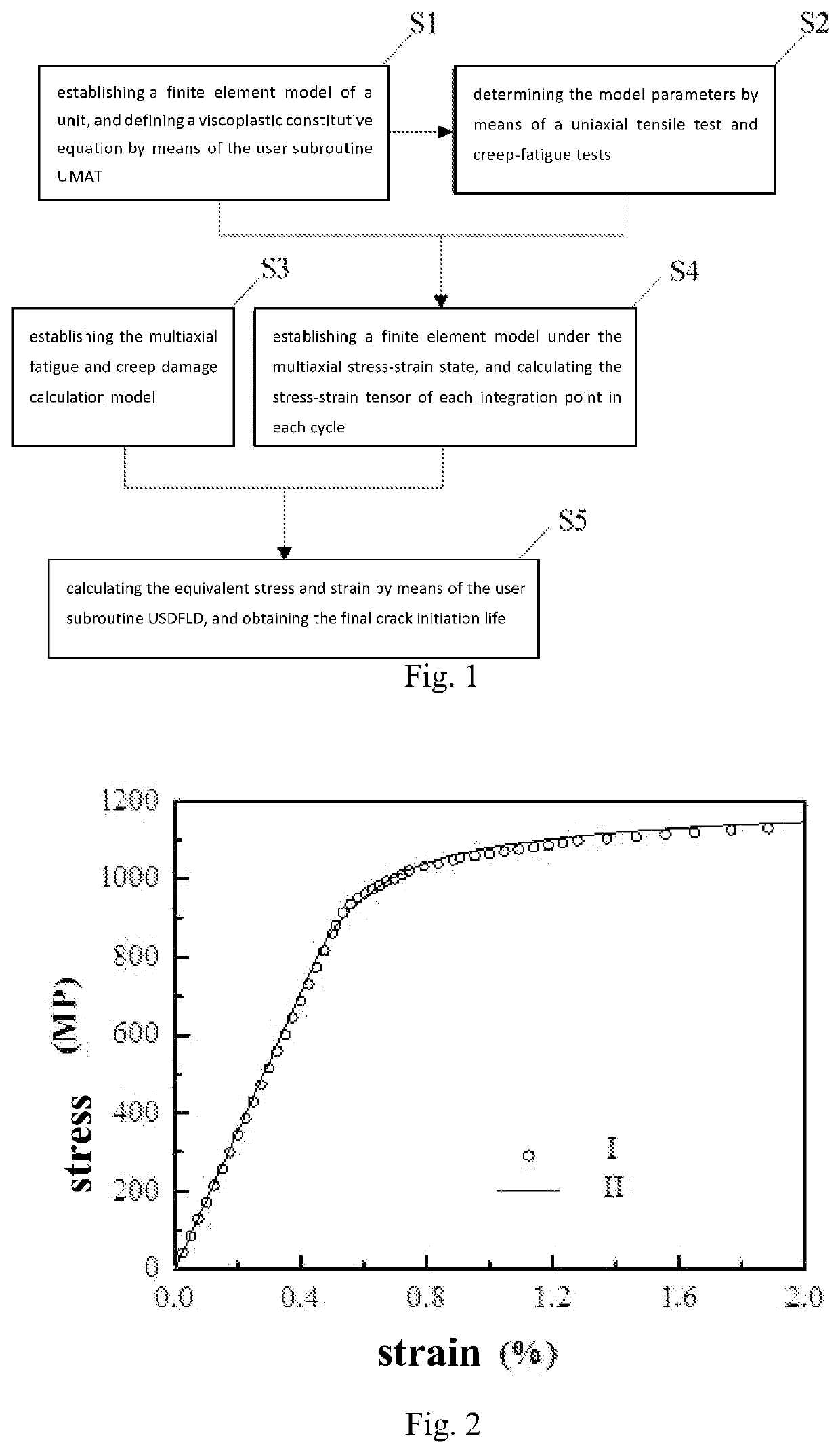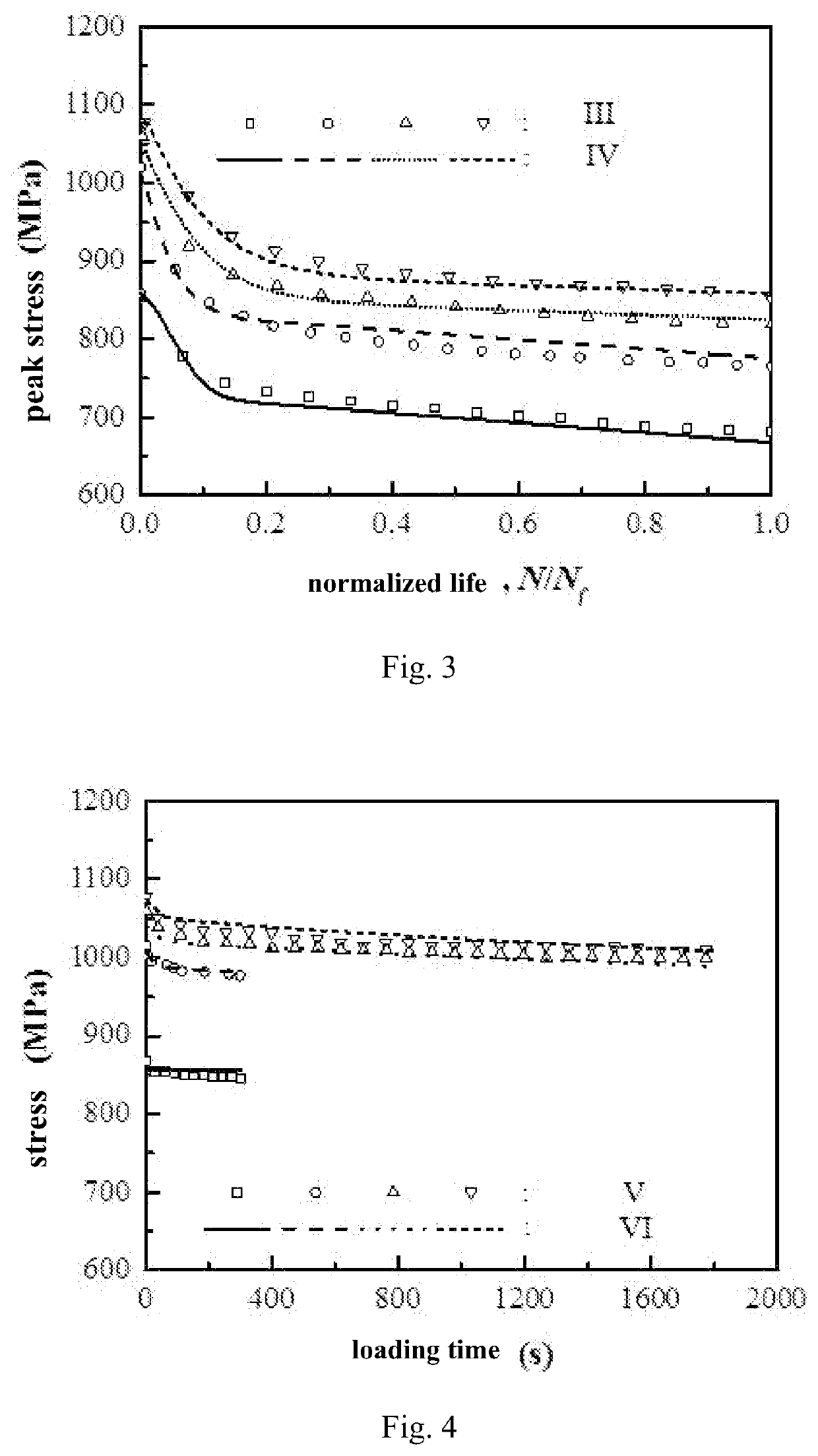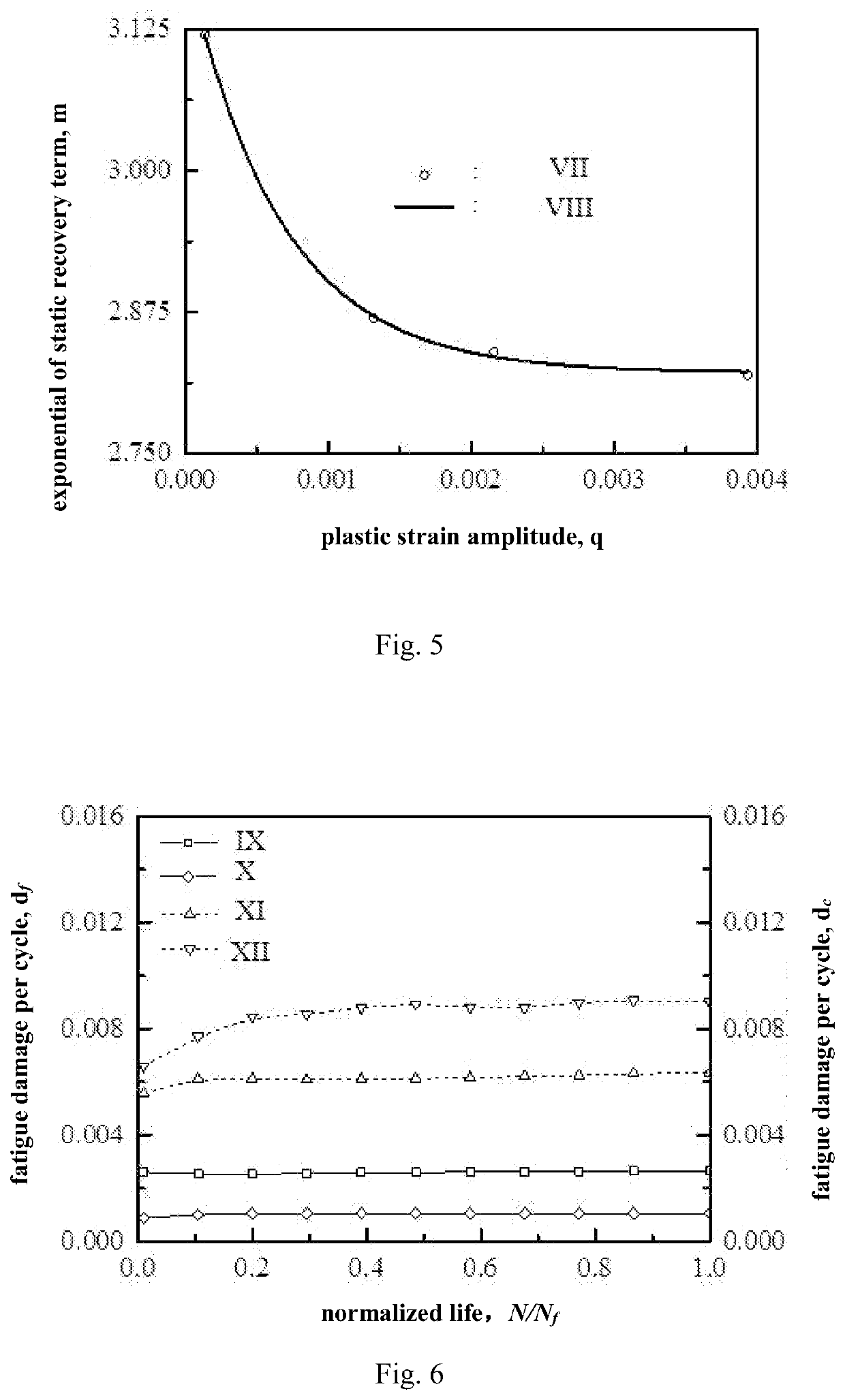A Multiaxial Creep-Fatigue Prediction Method Based On ABAQUS
a prediction method and multi-axial technology, applied in the field of numerical simulation, can solve the problems of limiting the service life of such parts, poor convergence, high computational cost, etc., and achieve the effect of strong intuitiveness
- Summary
- Abstract
- Description
- Claims
- Application Information
AI Technical Summary
Benefits of technology
Problems solved by technology
Method used
Image
Examples
Embodiment Construction
[0054]The followings are used to further illustrate the present application with specific embodiments. It should be understood that the following embodiments is only used to explain the present application but not to limit the scope of the present application.
[0055]FIG. 1 is a flow chart according to an embodiment of the multiaxial creep-fatigue prediction method based on ABAQUS of the present invention.
[0056]As shown in FIG. 1, in this embodiment, the multiaxial creep-fatigue prediction method based on ABAQUS comprises steps:
[0057]S1: establishing an ABAQUS finite element model, and defining the viscoplastic constitutive equation of the material to be tested in the process of cycling loads by means of the user subroutine UMAT;
[0058]S2: determining the model parameters required by the viscoplastic constitutive equation;
[0059]S3: establishing the fatigue damage calculation model and creep damage calculation model of the multiaxial stress-strain state of the material to be tested;
[006...
PUM
 Login to View More
Login to View More Abstract
Description
Claims
Application Information
 Login to View More
Login to View More - R&D
- Intellectual Property
- Life Sciences
- Materials
- Tech Scout
- Unparalleled Data Quality
- Higher Quality Content
- 60% Fewer Hallucinations
Browse by: Latest US Patents, China's latest patents, Technical Efficacy Thesaurus, Application Domain, Technology Topic, Popular Technical Reports.
© 2025 PatSnap. All rights reserved.Legal|Privacy policy|Modern Slavery Act Transparency Statement|Sitemap|About US| Contact US: help@patsnap.com



